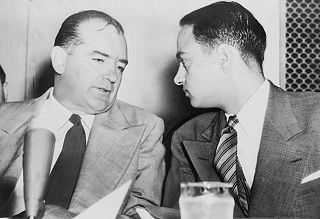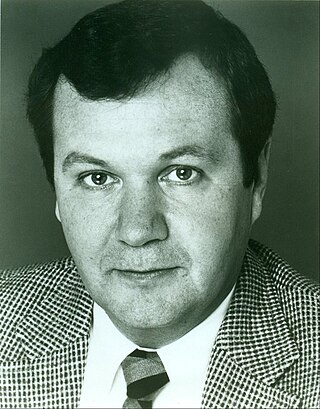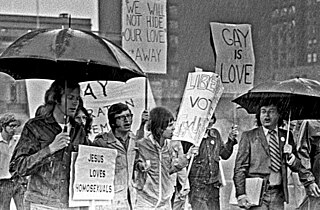Background
1940s Gouzenko Affair and Soviet espionage
Questions about loyalty within the civil service began to preoccupy the Canadian government in 1945 following Soviet cipher clerk Igor Gouzenko's defection. The details of the defection revealed that Soviet Union had a large spy network in Canada that compromised the Canadian civil service, military and National Research Council. Following the defection, the Canadian government launched the Kellock–Taschereau Royal Commission in 1946. The affair concluded that numerous government workers had betrayed the government. In response to the commission, the government created a new committee within the Privy Council of top civil servants and members of the RCMP. [6] The committee was charged with overseeing security within the civil service, and investigating civil servants who had believably questionable loyalties. [3]
Early investigations and questioning political loyalty
Starting in 1948, several cabinet directives were sent out by the committee asking the RCMP to investigate into the loyalty of government workers. [3] During this time, the RCMP would investigate a civil servant through a file check or field investigation. [1] A person would be flagged for investigation if officials suspected them of holding "subversive political associations," for example, if a worker was thought to have connections to communist or fascist organizations. [3]
Reliability of character in investigations

During the 1950s, Privy Council changed the criteria needed for civil servants to keep or maintain their security clearance. In addition to having to prove their loyalty, civil servants were required to prove their reliability of character. [3]
The cabinet directive introducing these new criteria described a person who was unreliable as someone with “defects in their character which may lead to indiscretion or dishonesty, or may make them the subjects of blackmail.” [3] In response to the new criteria, the Directorate of Security and Intelligence created the subdivision called “Character Weakness” in 1956. [7]
If a person could not meet these criteria, they would no longer be able to have access to classified information. Therefore they would either lose their job, be demoted or not be hired. [1]
Shortly after, Prime Minister John Diefenbaker inquired into these new criteria because he was unsure that a person found to have character weakness should have the same consequences as a person found to be disloyal. [3]
Homosexuality as a character defect
Once Diefenbaker made his inquiry, the security panel began trying to define what a character defect might be. The focus was immediately placed upon homosexuality as a character defect. [2]
The first study into the matter was written by Paul Frazer, a member of the security panel; in his report, it was explained that homosexuality was, in fact, not a character defect and that, contrary to popular narratives coming out of the United Kingdom and the United-States homosexuality was not a threat. [3]
The security panel rejected Frazer's report and moved forward with characterizing homosexuality as a character flaw. [2] Once the panel rejected Frazer's report, another member of the panel, D.F. Wall released his study, which outlined how homosexuality was a threat and that those suspected of it should not be trusted. [3] The panel then accepted D.F. Wall's report and applied it to the list of Character flaws. Homosexuality was different than all the other character flaws as it did not require physical evidence as proof. [3]
American influence
The Canadian government's response to homosexuality was deeply influenced by policy enactments of that of the United States. Given the necessity to appease American security interests alongside their own, the federal government adopted identical policies aimed at rooting out homosexual employees that reached far beyond security rationale to blatant homophobia. [8] US influence was further cemented into the purge through the information and criteria of homosexual detection deriving from the American psychiatric community. [8] The move to restrict and remove those deemed with 'character weakness' or homosexual traits had been motivated by the United States own purging whereas "homosexuals 'are unsuitable for employment in the Federal Government' because of their 'degraded,' 'illegal,' and 'immoral' activities rendered them innately unreliable.'" [8]
Canadian officials followed in the footsteps of the US in their tightening of national security while justifying their actions as one that brings closer the relationship between Canada's intelligence agencies and that of their allies. The significance of these relations and the need of adherence can be summarized by stating that "Canada's international alliances require that it be able to assure its allies, with whom it participates in common defence arrangements, that it has a sound system of internal security. Allied countries will not entrust Canadian officials and political leaders with secret information unless Canada has in place effective structures and procedures for detecting and preventing foreign espionage." [8]
Purge under the Royal Canadian Mounted Police
The RCMP began a purge to investigate and discover homosexuality in areas of the Canadian workforce that were deemed important for national security. [3] The sexuality of government, RCMP, and armed forces workers became the primary concern of the RCMP in the late 1950s. Anyone could have been accused of homosexuality, and if, after an intense series of investigations, a person was found to be homosexual, they would lose their security clearance, causing them to be demoted or lose their job entirely. [1]
Homosexuality eventually became the leading cause for internal investigations, with the civil service seeing so many accusations that the RCMP began struggling to keep up with them. [3] During the purges, thousands of employees were investigated and fired for their sexuality. [9] The level of severity of the purge can be noted given how "the head of the RCMPSS, William Kelly, had bragged at a Commonwealth security conference in May 1963 about the 'extensive scale' of the gay purges in Canada." [3]







